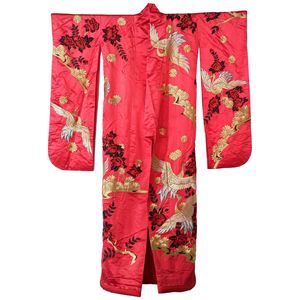Victorian Rosewood Adjustable Piano Stool
You must be a subscriber, and be logged in to view price and dealer details.
Subscribe Now to view actual auction price for this item
When you subscribe, you have the option of setting the currency in which to display prices to $Au, $US, $NZ or Stg.
- Victorian Period - The Victorian period of furniture and decorative arts design covers the reign of Queen Victoria from 1837 to 1901. There was not one dominant style of furniture in the Victorian period. Designers used and modified many historical styles such as Gothic, Tudor, Elizabethan, English Rococo, Neoclassical and others, although use of some styles, such as English Rococo and Gothic tended to dominate the furniture manufacture of the period.
The Victorian period was preceded by the Regency and William IV periods, and followed by the Edwardian period, named for Edward VII (1841 ? 1910) who was King of the United Kingdom and the British Dominions and Emperor of India for the brief period from 1901 until his death in 1910. - Baluster (furniture) - An architectural term for a column in a balustrade or staircase, often defined as a "vase shape". The shape is extensively used in furniture and decorative arts.
In furniture, it is used to describe a chair or table leg turned in that form, or more usually as an inverted baluster, with the bulbous section to the top. Less commonly used to describe a chair back that has the outline of a baluster. A baluster may also be split and applied to the front of a cupboard for ornamentation.
For ceramics and silver items it is often used to describe the shape of the whole item, rather than a part.
In Georgian glassware, the shape is commonly seen in the stem of glasses. - Reeding - A series of parallel, raised convex mouldings or bands, in section resembling a series of the letter 'm'. The opposite form of fluting, with which it is sometimes combined. Reeding is commonly found on chair legs, either turned or straight, on the arms and backs of chairs and couches and around table edges in the Neoclassical or Classical Revival manner. Reeding was also used as a form of decoration during the Edwardian period, but it is usually much shallower and evidently machine made.
- Rosewood - A dense timber that varies in shade to very light brown to almost black. When rosewood is cut and sanded the colour of the timber will turn black, and after polishing and exposure to daylight, the surface will gradually lighten over time to light brown with black streaks.
The name comes from the odour emanating from the timber when it is planed, sanded or cut.
Rosewood was very popular for use in Victorian furniture in the second half of the 19th century, and at that time most of the rosewood was imported from Brazil. However it also grows in India and Indonesia.
It is used in the sold for chairs and table legs, but for carcase furniture such as side cabinets and bookcases, and for table tops it is always used as a veneer.
This item has been included into following indexes:
- stools, period or age - Victorian 260
- stools, type or function
Visually similar items

A Georgian mahogany tilt-top tripod wine table, the plain circular dished top comprising one single piece of mahogany. Some surface marks. Turned column support and pad feet. Diameter 80 cm

Fine vintage richly embroidered Japanese red ground silk kimono

A Victorian figured walnut oval loo table, the inlaid top with quartered veneer, raised on a four-way pedestal base with carved detail. 133 cm x 102 cm x 76 cm

A George III mahogany bowfront corner cabinet, the two doors with fine diagonal inlaid stringing, fancy H-form brass hinges, three interior shelves. 72 cm x 48 cm x 101 cm
